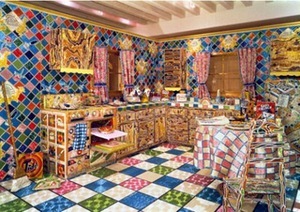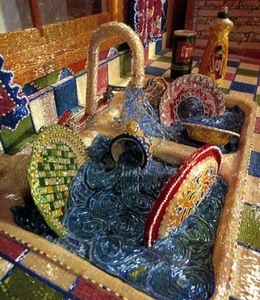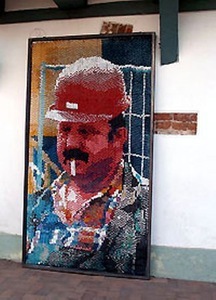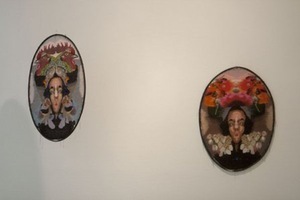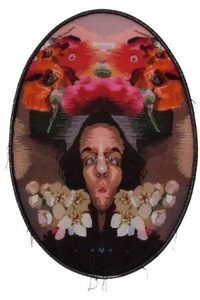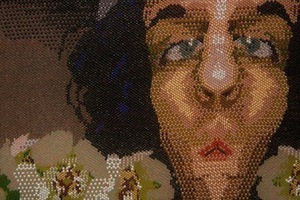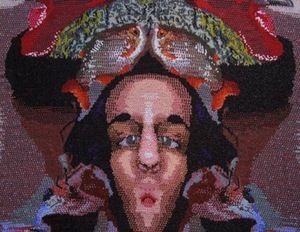THE LANGUAGE OF RŪTA NAUJALYTĖ'S BEADS 2
In brief: Contemporary textile hardly could be called an applied art. Liberated from the nature of folk tapestries and ribbons, the craft became art that surprises its viewers with new contexts, solutions, discoveries. The expanded concept of textile gave more playfulness and freedom of improvisation both to an artist and a consumer. New contemporary technologies, broad usage of materials and conceptual idea transformed textile into an unexpected experiment.
The bouquet of fancy experiments and individual improvisations were offered by Kaunas Biennial Textile’11 and especially the exhibition ‘Rewind Personal Story‘, displayed at M. Žilinskas Art Gallery in Kaunas. One of the most interesting textile works in the exhibition is the piece ‘09/03/1981’ by Lithuanian artist Rūta Naujalytė. An extraordinary technique, peculiar colours and a conceptual idea drew the attention of many visitors.
In order to realise her ideas, R. Naujalytė uses the peyote string technique that has no analogues in the Lithuanian textile. On the whole, beading has no any vivid artistic status and most often is treated as an element of clothing or is related to decoupage and felt work.
Such attitude looks highly backward when we look at works of Lisa Lou – ‘The Queen of Beads’. This artist covers the surfaces of everyday surroundings with thousands of glass beads, creating a new conditional reality.
R. Naujalytė could be called our own queen of beads. Of course, her beads speak a different language: they do not live separate lives but ‘weave’ a harmonious dreamlike story. The beads could be treated as threads of tissue that twine the pattern in chime and organically while the colours create a solid narrative.
The author started to experiment with the peyote technique in 2008, when she presented her Master‘s final work – ‘Rapolas – Clerk of the Works’. The artist presented an authentic portrait of the hero with a dose of irony, by matching two different images – strong and firm builder and the bead as a feminine attribute.
The line of irony is continued in the ‘09/03/1981’ as well. In this diptych clichés of astrology in mass culture are caricatured. The artist chooses her birth date as a primary point and develops an individual story. Its characters are all the symbols related to the date: roosters, poppies, orchids and fishes. Constructing her portrait with images of various different horoscopes that are supposed to determine her personality, the author tries to create the image of her ‘anima’ – the image that is thrust by the gutter-press. As a respond to the ‘real’ and ‘individual’ portrait offered by astrology, the author creates a new image of a decorative puppet without any personal features. The puppet is a cloned citizen, succumbed to the mass force. The effect of a mirror that reflects the same side, mocks at everyone who believes unconditionally.
The artist as if asks us: ‘Is it me? Or is it you?’. The author speaks not only about herself but also about every single one of us. Astrology is used as a means to examine more common social clichés – superficial gloss, instinct of herd, glassy lifestyle and temporality. However, a rather dismal text of the author is presented in a playful, innocent and colourful manner, making the reality much softer. The beads become the allegory of a light play that helps get rid of the traditional serious attitude towards the problematic questions, important to the artist.








